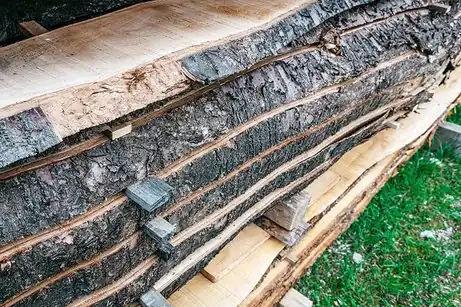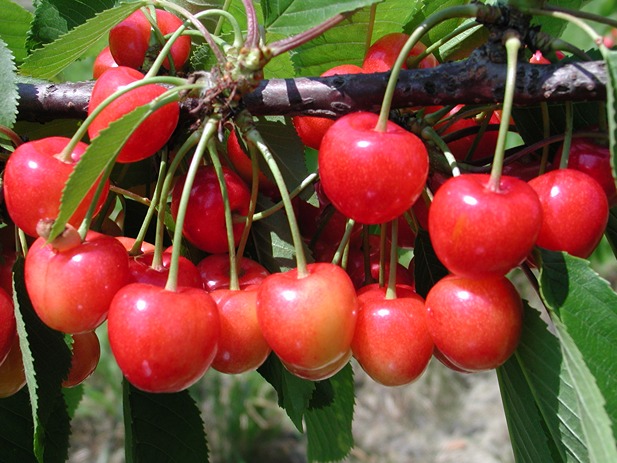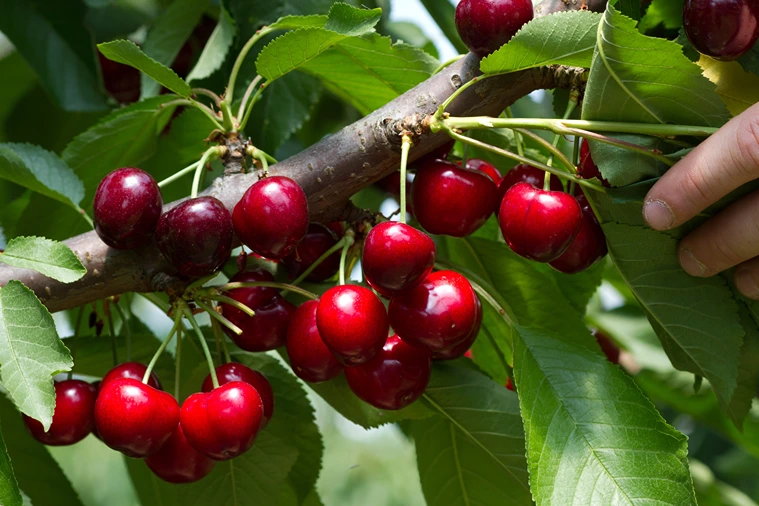The wild cherry tree is native to a broad geographical range spanning Europe, North Africa, and parts of Western and Central Asia. Its natural habitat stretches from the British Isles to the Atlas Mountains of Morocco and Tunisia, reaching northward to Norway and eastward into the Caucasus, northern Iran, and Anatolia.
Interestingly, there is also an isolated population in the western Himalayas. Over the years, the tree has been widely cultivated beyond its native range and has successfully adapted to regions such as Australia, New Zealand, and North America.
Highly valued for both its fruit and timber, P. avium plays a crucial role in forestry and horticulture. In Tunisia, this species holds considerable economic significance, especially in the northwestern regions, where it is prized for its fine-quality wood and use as rootstock for other Prunus varieties.

Economic and ecological relevance
Known as one of the noble hardwoods, wild cherry has gained popularity in recent years, particularly due to its aesthetic appeal and growing demand in woodworking and furniture making.
Despite previous research into its technological properties, there remains a gap in understanding how environmental factors, such as the location of growth, influence the physical and mechanical characteristics of cherry wood.
This study aimed to fill that gap by evaluating two wild cherry populations located in Tabarka and Ain Draham in northwestern Tunisia. Researchers selected 75 dominant trees from each site and examined various factors, including stem straightness, presence of decay, dendrometric traits, and mechanical properties.
The findings revealed notable differences between the two locations. In Tabarka, 66% of trees had straight stems, a desirable trait in forestry, while only 57% in Ain Draham displayed similarly good form.
Site-specific characteristics
Complex stem curvatures were more frequent in Ain Draham, affecting about 11% of trees, compared to 7% in Tabarka. Decay also varied between sites. Around 50% of the sampled trees in Ain Draham were affected by rot, particularly older individuals with a diameter at breast height greater than 30 cm.
In contrast, only 40% of trees in Tabarka showed signs of decay, indicating better overall health. This highlights the importance of age in susceptibility to rot and the need for active forest management.
From a technological standpoint, wild cherry wood from both sites exhibited moderate density (627–629 kg/m³) and was classified as a medium hardwood. It demonstrated average performance in mechanical tests, with Monnin hardness values around 4.3, bending strength between 94.95 and 99.85 MPa, and compressive strength ranging from 44.5 to 51.7 MPa.
Technical potential and recommendations
These values confirm its suitability for fine carpentry and cabinet making, offering a more sustainable and cost-effective alternative to exotic hardwoods.
In conclusion, Prunus avium presents a promising resource for Tunisia’s forestry sector. With appropriate silvicultural practices, especially during early growth stages, high-quality timber can be cultivated.
Continuous monitoring and targeted forest management will ensure that this noble hardwood reaches its full economic and ecological potential in the region.
Source: NouriJ., Houcine S., Chaabane A. 2025. Effects of biotopes on the quality of cherry wood (Prunus avium) in Tunisia. Silva Balcanica 26(1): 65-80. https://doi.org/10.3897/silvabalcanica.26.e124633
Image source: Calligaro
Melissa Venturi
University of Bologna (IT)
Cherry Times - All rights reserved













